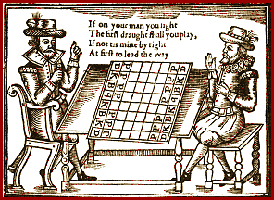|
Dorothea Tanning

Mr. and Mrs. Ernst play chess in Sedona, Arizona

Dorothea Tanning was ahead of her
time. She was a Surrealist painter before having ever been exposed to the
genre. As independent as she seemed to have been ...
- moving from her small
hometown to Chicago, then to New Orleans, then to New York City without
money (she had $25 to be exact) or prospects -
Peggy Guggenheim, " while conceding that Dorothea was
'pretty' and 'quite talented,' dismissed her as a fille de rien,
'pretentious, boring, stupid, vulgar, and dressed in the worst possible
taste.'"
-Mistress Of Modernism: The Life Of Peggy Guggenheim By Mary V. Dearborn
Dorothea wrote:
"I wore discount $5 dresses from a wonderful place on
Union Square called Klein's. Also thrift shop stuff. A few of us took to
wearing old clothes, but they had to be really old, from another time, way
back. We'd show up in these rags as if it were perfectly natural. You had to
be deadly deadpan about it. One of these appears in my painting "Birthday."
It was from some old Shakespearean costume."
Birthday by Dorothea Tanning
...it's hard to picture her
without Max Ernst. Ernst even gave the title, Birthday, to her
self-portrait. There romance was filled with the type of adversity that tends
to bond two people together tightly:
Then he [Ernst] found Dorothea
Tanning, a beautiful young painter originally from Illinois, now married to
a U.S. naval officer on active sea duty. Tanning's advent, ironically, was
Peggy's own fault. At the end of the first year of Art of This Century, she
decided that she ought to present an all-woman show and induced Max, along
with Putzel, Breton, Jimmy Ernst and others, to form a jury to decide whom
to include. The judges chose Frida Kahlo, Louise Nevelson, Buffie Johnson,
and other serious artists, as well as Peggy's sister, Hazel, Gypsy Rose Lee,
and Djuna Barnes. Max had met Dorothea the year before and been taken by her
and her work. He selected two of her paintings to be shown at the exhibit,
called "31 Women. "Peggy joked later that she should have limited the number
to thirty, for the meeting with Tanning meant the end of her marriage. Max
fell hard and was soon spending days with Dorothea at her apartment and not
coming home. Hale House [where Peggy and Max lived] became only a place to
paint. Feeling used, Peggy took away his keys but that only threw him into
Dorothea's arms all the more. She retaliated in other ways too, abusing Max
verbally and resuming her own promiscuous affairs. According to Hazel, "she
did everything she could to humiliate him." Max's infidelity was
excruciating to Peggy. She could not sleep and cried a lot.
"Her eyes were always red, her nose all swollen," recalled Ethel Baziotes,
wife of the painter. She threatened suicide if Max did not come back to her.
Peggy appealed for help to Putzel and Duchamp, who could do little except
sound sympathetic. In fact much of the art community sympathized with Peggy.
However unconventional and socially tolerant, the artists did not
approve of a romance in wartime between a woman married to a naval officer
on active duty and a German national. Particularly after publication of
Peggy's autobiography in 1946 with its scathing account of their affair, Max
and Dorothea found themselves shunned by many of their former friends. That
tear they left New York for Sedona, Arizona, in part to escape their moral
censurers...
-The Guggenheims: A Family History By Irwin Unger, Debi Unger
Dorothea...already believed
that her predecessor [Peggy] had interfered with Max's becoming an American
citizen. In the course of his application, the authorities, Tanning claimed,
took out a copy of Peggy's book and tried to make him answer the charge of
stealing an American's wife. But the divorce became final on October 21, and
Ernst married Tanning three days later, in a double wedding with Man Ray and
Juliet Browner.
-Mistress Of Modernism: The Life Of Peggy Guggenheim By Mary V. Dearborn

Max Ernst and Dorothea Tanning, 1948

Ernst and Tanner (Tanner's picture
Maternity on left), by Lee Miller
Finally .... Endgame,
Dorothea Tanning's submission to the Imagery of Chess show.

|

